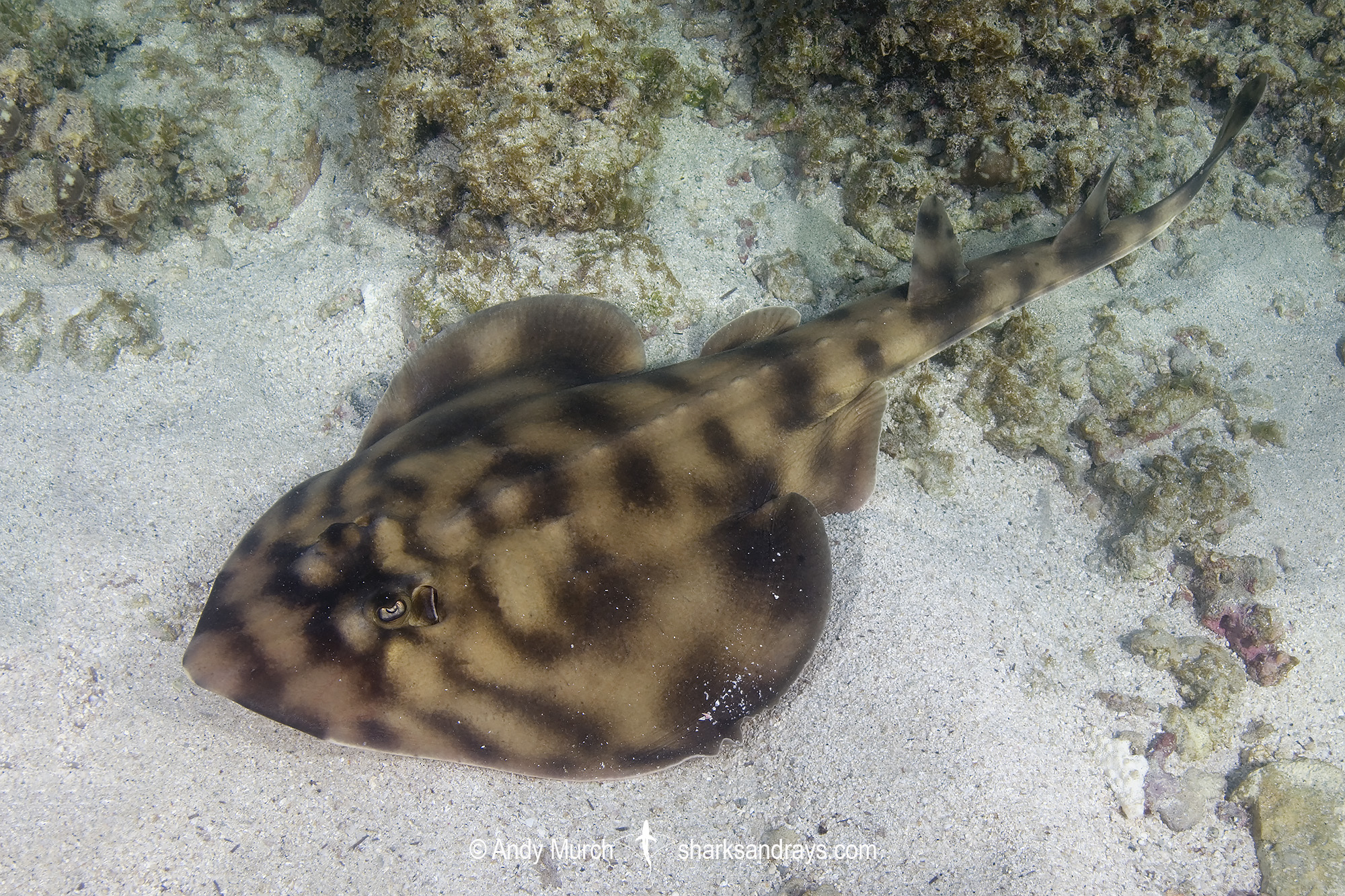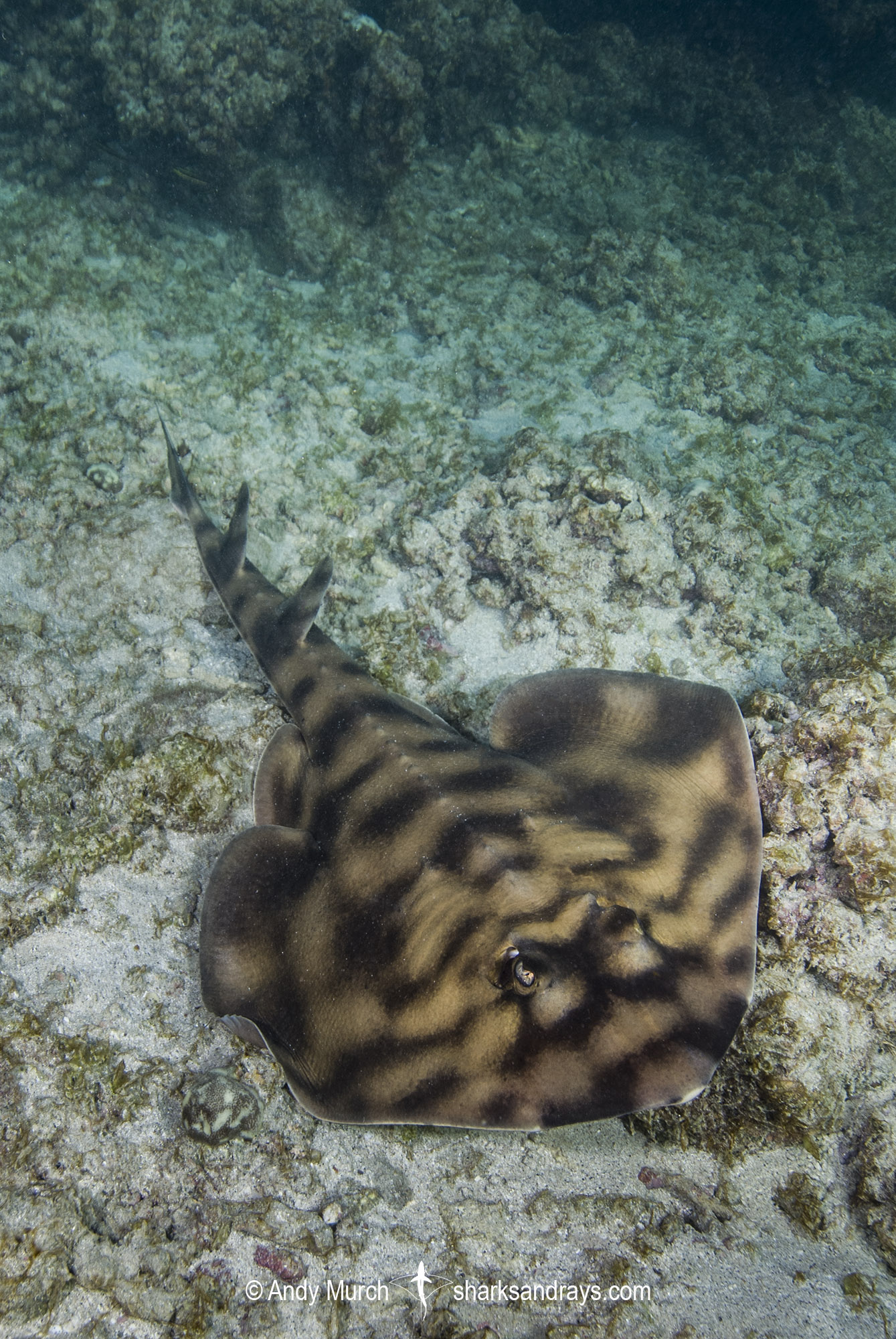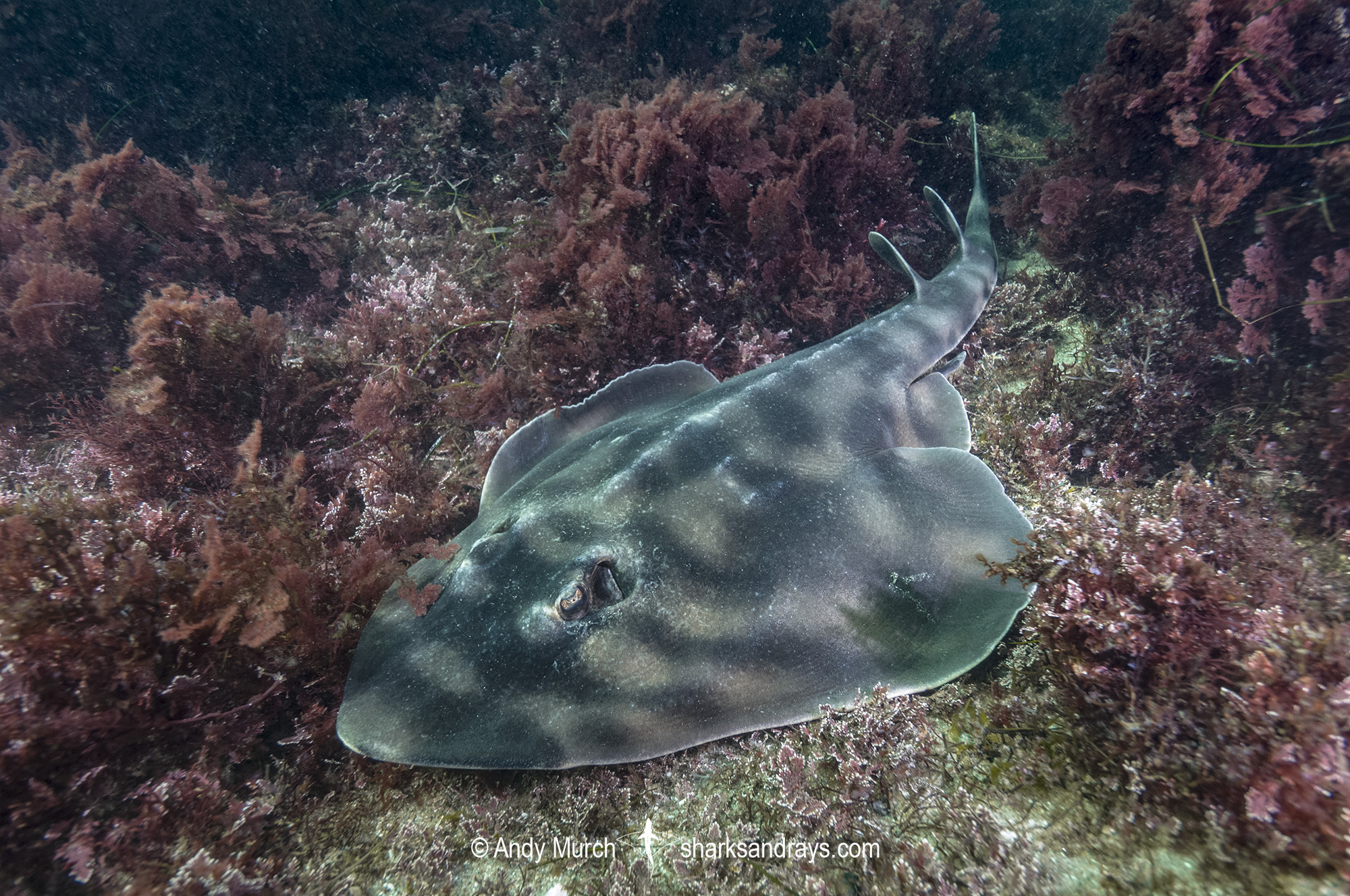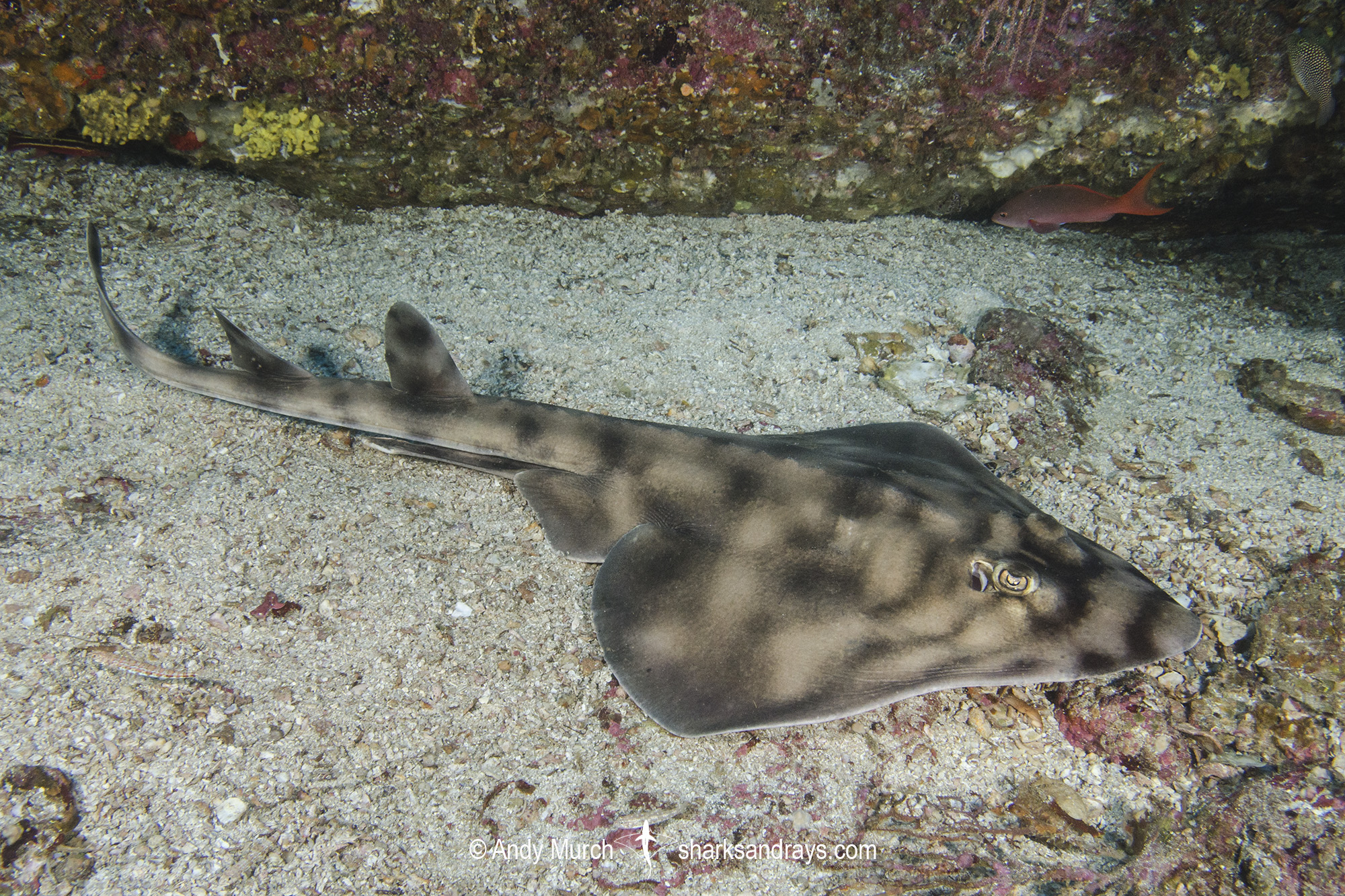Common names
Banded Guitarfish.
Binomial
Zapteryx exasperata.
Synonyms
Platyrhina exasperata, Trigonorhina alveata.
Identification
A fairly large guitarfish with a shovel-shaped body, and a short, obtusely pointed snout with a rounded tip. Rostral ridges widely separated throughout their length. Eyes large. Preorbital length 3-4 x orbit width. Spiracles without lobes or skin folds. Nostrils thin, transverse, and widely spaced. Nasal curtain absent. Nasal flaps extend slightly over nostril opening.
Anterior margins of disc weakly convex. Pectoral apices broadly rounded. Dorsum covered in granular denticles. Ventral denticles much smaller and less distinct. Small orbital thorns. Much larger thorns present in two short rows on each shoulder and in a continuous row on midline from nape to first dorsal fin.
Tail fairly robust. Dorsal fins closely spaced, with narrowly rounded apices and convex posterior margins. Caudal fin triangular, without a defined lower caudal lobe, but sometimes with a small notch in posterior margin.
Colour
Dorsum and fins beige or greyish-brown with many diffuse darker blotches that sometimes form vaguely transverse bars across disc. Blotches on snout and anterior to eyes often black. Rostral cartilage imperceptible; colour identical to dorsum. Ventrum mostly white with a dark blotch near pectoral apices.
Size
Maximum length 97cm. Size at birth 15-18cm.

Conservation Status
DATA DEFICIENT
Although the IUCN lists the Banded Guitarfish (Zapteryx exasperata) as data deficient, fishing pressure for large batoids in Mexico is intense with declines reported in most species.
The banded Guitarfish is a targeted species on the Pacific coast of Baja California and within the Gulf of California. Fishermen exploit gravid females when they congregate in inshore nursery grounds.
In the Gulf of California, the banded guitarfish has become rare in catches, but it is commonly encountered by divers within the Cabo Pulmo Marine Park.

Habitat
Tropical/warm-temperate seas. Benthic in sandy bays, around coral reefs, in kelp forests, and offshore on continental shelf. From very close inshore to 200m.
Distribution
Eastern Pacific. Found from central California to at least Mazatlán, México. Records from beyond southern Mexico probably refer to the Southern banded guitarfish (Zapteryx xster).
Reproduction
Aplacental viviparous. Litter size 2-13. Gestation length 5-6 months.
Diet
Adults feed mainly on benthic fishes.
Behavior
Enters shallow water (2-10m) during the summer months, retreating to deeper water in the fall and winter. Segregates by sex for much of the year.
Reaction to divers
Easy to approach. Can be skittish but generally tolerant of divers; remaining motionless unless harassed.
Diving logistics
Banded Guitarfish congregate in the lower Sea of Cortez during the winter months. In late February in Cabo Pulmo they were present during every dive on the reef at about 15m.
What’s new
View our full list of updates
Similar species
Southern Banded Guitarfish Distinguished by longer, more pointed snout and clusters of bright yellow spots within dark blotches.














